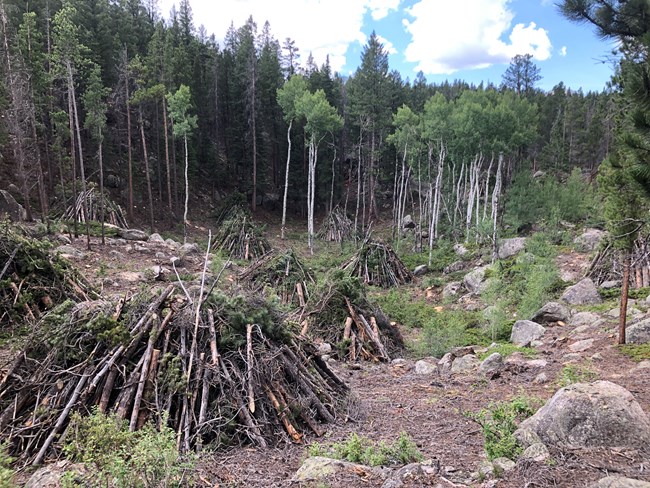Last updated: November 19, 2019
Article
Fuels Project at Rocky Mountain National Park Helps Protect Park and Local Community from Future Fires

”This treatment will help reduce the risk to employees and the public, as well as protect the park's infrastructure, natural resources, and cultural resources in the area,” said fire management officer Mike Lewelling. “The project also helps meet the East Portal Coalition Wildfire Protection Plan designed to protect a number of businesses and residences along Tunnel Road, outside of Rocky Mountain National Park."
In addition, this treatment will help protect the East Portal of the Adams Tunnel, owned and operated by the Bureau of Reclamation, from sedimentation and other potential negative effects of a wildfire. The tunnel provides a feed for much of the municipal water and hydro power available to the Front Range.
The project work built over 3,000 piles (over 2.6 million cubic feet of cut and pile fuel) that are scheduled to be burned this winter when snow, smoke dispersion, wind and other factors are favorable. An estimated 3,262 piles were built on the project.
